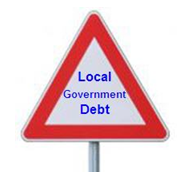Econolympics
by Kasie R. Jean As a recurring Winter Olympics viewer, I am counting down the days until the games begin on February 12. As an economist, however, I am intrigued by the number of tools an introductory economics course provides students with to analyze the effects of the Olympic games on the local economy of Vancouver. Three topics in particular come to mind that most students will encounter in a basic economics course: consumer spending, negative externalities, and cost-benefit analysis.
As a recurring Winter Olympics viewer, I am counting down the days until the games begin on February 12. As an economist, however, I am intrigued by the number of tools an introductory economics course provides students with to analyze the effects of the Olympic games on the local economy of Vancouver. Three topics in particular come to mind that most students will encounter in a basic economics course: consumer spending, negative externalities, and cost-benefit analysis.A recent article reports that the winter games are expected to boost travel-related spending by $800 million in Vancouver thanks to the incoming surge of general spectators, friends and families of competing Olympians, and athletes themselves to the metro area. But where does this spending go? Hotels, restaurants, and transportation are the likely candidates to benefit from such a surge, so the leisure and tourism industry should receive the largest boost. Although this positive shock to the industry is temporary, Olympics-related spending in 2010 is expected to account for 0.8% of Vancouver’s economic growth, trailing only housing investment and government spending.
However, accompanying this boost in tourism are some negative externalities on locals. While you may not always need a reservation to your favorite restaurant on a normal weeknight, the increase in the number of visitors to the metro area is likely to cause long lines for restaurant-goers. Even getting to your favorite watering hole might be no small feat, as traffic congestion and parking dilemmas are likely to pick up due to the additional vehicles on the road at any given time. Finally, increased pollution and trash creation are also likely to impose a negative externality on residents during the winter games.
Setting up shop for the winter games comes at a high price. Holding the Olympics requires that the host city build the necessary facilities, hire additional security, and provide extra health care in the case of injury to athletes or spectators. This is likely to weigh on the spending budget for Vancouver’s economy. Therefore, standard cost-benefit analysis would require you to determine whether the benefits gained from having the Olympics in a particular city outweigh the costs.
In short, there is a plethora of economic topics you could use as a conversation starter regarding the Olympics. So pick your favorite concept, and analyze away!
Discussion Questions:
1. How would you value having the Olympics in your hometown? Would the benefits you receive from this outweigh the negative externalities imposed on you by the winter games?
2. How do you think the Olympics will affect things like hotel and menu prices during the winter games? Do you expect such a short surge in demand to affect other local pricing? Why or why not?
3. State how the following introductory economic concepts could be used to analyze the effect of the Olympics on Vancouver: the multiplier effect, the Tragedy of the Commons, and demand shocks.
Labels: Cost-Benefit Analysis, Externalities, Fiscal Policy, Government, Supply and Demand





